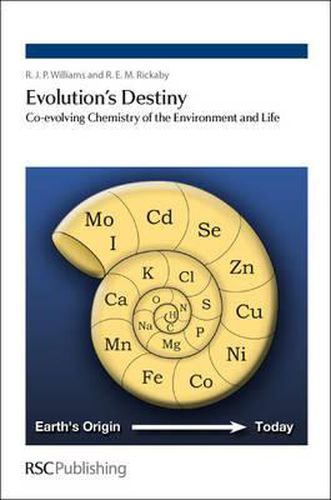Readings Newsletter
Become a Readings Member to make your shopping experience even easier.
Sign in or sign up for free!
You’re not far away from qualifying for FREE standard shipping within Australia
You’ve qualified for FREE standard shipping within Australia
The cart is loading…






This book is written as an addition to Darwin’s work and that of molecular biologists on evolution so as to include views of it from the point of view of chemistry rather than just from our knowledge of the biology and genes of organisms. By concentrating on a wide range of chemical elements, not just those in traditional organic compounds, we show that there is a close relationship between the geological or environmental chemical changes from the formation of Earth and those of organisms from the time of their origin. These are considerations which Darwin or other scientists could not have explored until very recent times since sufficient analytical data were not available. They lead us to suggest that there is a combined geo- and bio-chemical evolution, that of an ecosystem, which has had a systematic chemical development. In this development the arrival of new very similar species is shown to be by random Darwinian competitive selection processes such that a huge variety of species coexist with only minor differences in chemistry and advantages. This is in agreement with previous studies. On the large scale of evolution of very different organisms, and over greater timescales, by way of contrast, we observe that groups of species have special, different, chemical features and function. It is more difficult to understand how they evolved and therefore we examine their chemical development in detail. Overall there is a cooperative evolution of a chemical system driven by capture of energy, mainly from the sun, and its degradation in which the chemistry of both the environment and organisms are facilitating intermediates. We shall suggest that the overall drive of the whole joint system is to optimise the rate of this energy degradation. Since the environmental changes are inorganic and relatively fast they move inevitably to equilibrium. The living part of the system, the organisms, under the influence of this inevitable environmental change are forced to follow but as they are increasingly energised and their reactions are slow, they move further away from equilibrium. We are able to explore the ways in which this chemical system evolved, recognising that as complexity of the chemistry of organisms increased, they had to be formed from more and more compartments and to become part of a chemically cooperative overall activity. They could not remain as isolated species. Only in the last chapter do we attempt to make a connection between the changing chemistry of organisms with the coded molecules of each cell which have to exist to explain reproduction.
$9.00 standard shipping within Australia
FREE standard shipping within Australia for orders over $100.00
Express & International shipping calculated at checkout
This book is written as an addition to Darwin’s work and that of molecular biologists on evolution so as to include views of it from the point of view of chemistry rather than just from our knowledge of the biology and genes of organisms. By concentrating on a wide range of chemical elements, not just those in traditional organic compounds, we show that there is a close relationship between the geological or environmental chemical changes from the formation of Earth and those of organisms from the time of their origin. These are considerations which Darwin or other scientists could not have explored until very recent times since sufficient analytical data were not available. They lead us to suggest that there is a combined geo- and bio-chemical evolution, that of an ecosystem, which has had a systematic chemical development. In this development the arrival of new very similar species is shown to be by random Darwinian competitive selection processes such that a huge variety of species coexist with only minor differences in chemistry and advantages. This is in agreement with previous studies. On the large scale of evolution of very different organisms, and over greater timescales, by way of contrast, we observe that groups of species have special, different, chemical features and function. It is more difficult to understand how they evolved and therefore we examine their chemical development in detail. Overall there is a cooperative evolution of a chemical system driven by capture of energy, mainly from the sun, and its degradation in which the chemistry of both the environment and organisms are facilitating intermediates. We shall suggest that the overall drive of the whole joint system is to optimise the rate of this energy degradation. Since the environmental changes are inorganic and relatively fast they move inevitably to equilibrium. The living part of the system, the organisms, under the influence of this inevitable environmental change are forced to follow but as they are increasingly energised and their reactions are slow, they move further away from equilibrium. We are able to explore the ways in which this chemical system evolved, recognising that as complexity of the chemistry of organisms increased, they had to be formed from more and more compartments and to become part of a chemically cooperative overall activity. They could not remain as isolated species. Only in the last chapter do we attempt to make a connection between the changing chemistry of organisms with the coded molecules of each cell which have to exist to explain reproduction.